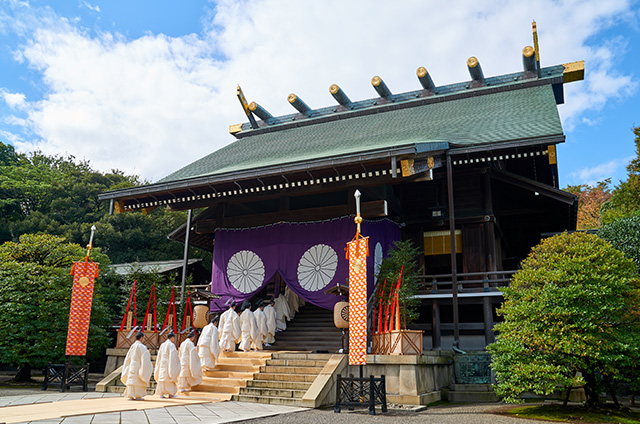- Japanese
- English

On the first, eleventh, and twenty-first of each monthMonthly Rites
DailyMorning Offering of Consecrated Rice
Evening Offering of Consecrated Rice
Memorial Service (Sacred Dance Ceremony)
Death Anniversary Rites
The New Year begins with the booming sound of Yasukuni Jinja’s giant Taiko drum.
When the clock strikes midnight on January 1, twenty-one solemn drumbeats ring out through the darkness. Bonfires are lit along the main approach to the shrine, and the grounds soon become filled with worshippers making their first shrine visit of the New Year. At the Main Sanctuary, a ceremony is held in which the first water of the New Year drawn from a well on the shrine grounds is offered to the enshrined spirits. Next, New Year’s rites are performed to pray for the security of the nation and peace among its people.
Visitors to the shrine grounds are offered sacred sake and amazake, and ritual events such as performances of traditional entertainment and archery rites are held to celebrate the New Year, along with the annual New Year’s lottery.
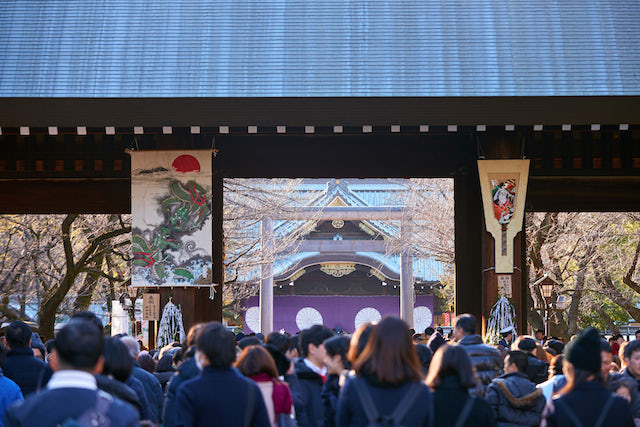
The most important events at Yasukuni Jinja are the annual rites held in the spring and fall.
The Annual Spring Rites are held from April 21 to 23. A purification ceremony, first day’s rites, second day’s rites, and closing banquet are held over the course of these three days. Before the first day’s rites, a ceremony is carried out to purify not only the priests, but also every object used in in the rituals. In the first day’s rites, the enshrined spirits are consoled with fifty offerings of sacred sake, consecrated rice, seafood, mountain vegetables, and other foods they enjoyed during their lifetimes, and prayers are made for world peace. The events on this day also include a procession of Imperial envoys, the dedication of an offering from His Majesty the Emperor, and an address to the gods. During the Annual Spring Rites, the shrine grounds bustle with celebratory events such as a variety of ritual performances, a special exhibition of flower offerings, and a primrose exhibition.
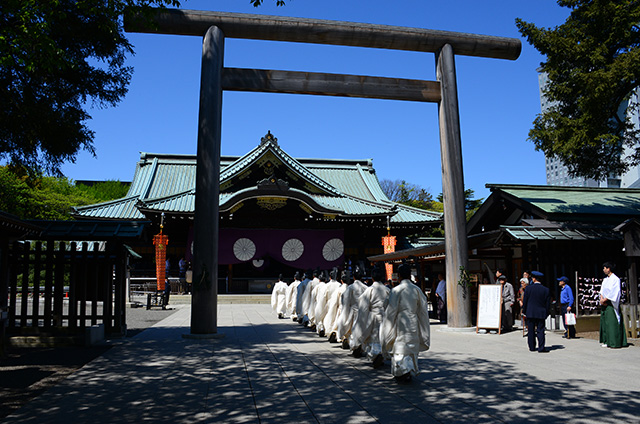
Based on Obon, an ancient Japanese festival to honor the spirits of deceased ancestors, the Mitama Festival began in 1947. Nowadays, it has become a beloved staple of summer in Tokyo and is packed with many visitors every year.
During the festival, the shrine grounds are hung with more than 30,000 small and large votive lanterns, as well as paper lanterns bearing writing and art by notable figures from various fields, which beautifully illuminate the night sky over Kudan. Rituals to comfort the enshrined spirits are performed nightly at the Main Sanctuary. Ritual events including processions of Mikoshi (portable shrines) and Nebuta floats from Aomori, a special exhibition of flower offerings, and various performances are held. In addition, the brightly illuminated main approach to the shrine hosts the earliest Bon Odori dance in Tokyo. This dance, as well as the rows of night stalls, recreates the nostalgic atmosphere of ancient festivals for the modern day.
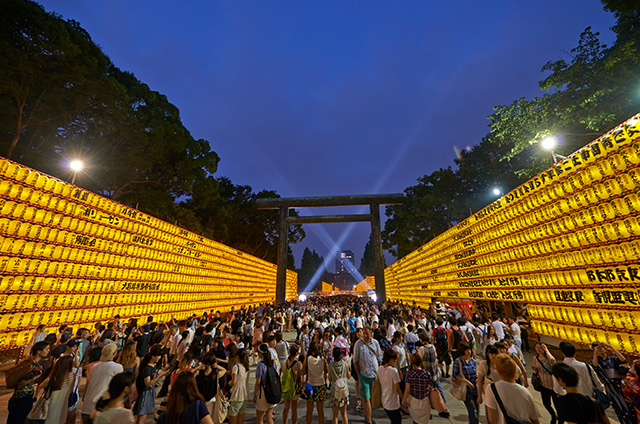
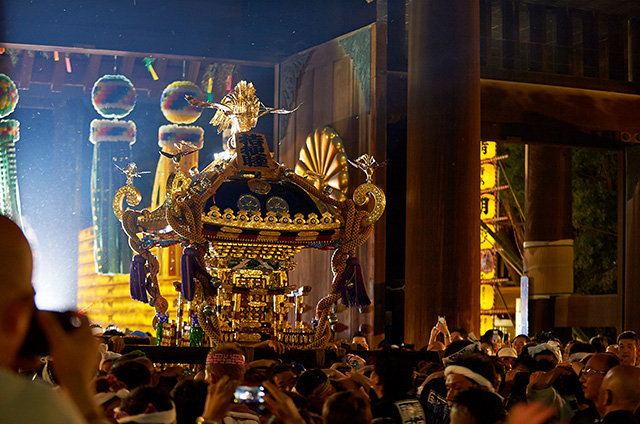
The most important events at Yasukuni Jinja are the annual rites held in the spring and fall.
The Annual Fall Rites are held from October 17 to 19. A purification ceremony, first day’s rites, second day’s rites, third day’s rites, and closing banquet are held over the course of these four days. Just like in the Annual Spring Rites, the events on the first day include a procession of Imperial envoys, the dedication of an offering from His Majesty the Emperor, and an address to the gods. Afterwards, rituals are performed on the second and third days similar to those on the first day. On the last day, a banquet is held in appreciation for the successful completion of the annual rites. To celebrate the Annual Fall Rites, other events are held such as a tea offering ceremony and an archery ceremony in which archers shoot at a deer-shaped target. In addition, during the annual rites, the shrines grounds bustle with a variety of ritual performances, a special exhibition of flower offerings, and a ritual chrysanthemum exhibition.
